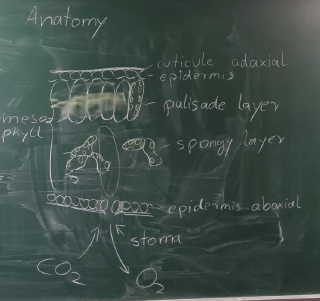02 Plants with Spores and Seeds
1/11
There's no tags or description
Looks like no tags are added yet.
Name | Mastery | Learn | Test | Matching | Spaced |
|---|
No study sessions yet.
12 Terms
What are the characteristics of the cyanobacteria Nostoc commune?
chains of prokaryotic cells with heterocysts containing enzymes capable of nitrogen fixation
What is the importance of Marchantiophyta (liveworts)?
liverworts were the earliest known land plants (Viridiplantae), known as fossils from the Devonian period around 400 mil ya
What are the vegetative characteristics of the division Bryophyta (mosses)?
poikilohydric; gametophyte (stemlet, rhizoids, leaflets, calyptra); stemlet with primitive cells for transport of water, no phloem or xylem
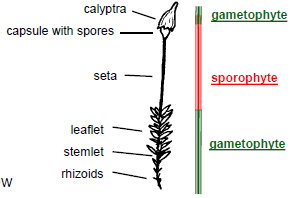
What are the reproductive characteristics of the division Bryophyta (mosses)?
antheridia and/or archegonia at the tip of gametophyte; spermatozoids fertilize egg cells in archegonia; sporophyte with seta and capsule containing meiospores with lid
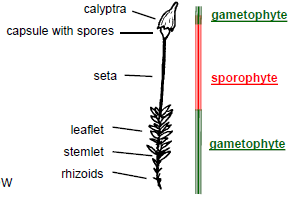
What are the vegetative characteristics of the order Polypodiales (polypod ferns)?
most have horizontal rhizome with roots; vascular tissue (phloem and xylem); alternating leaves (frond) with most blades pinnate; most not poikilohydric
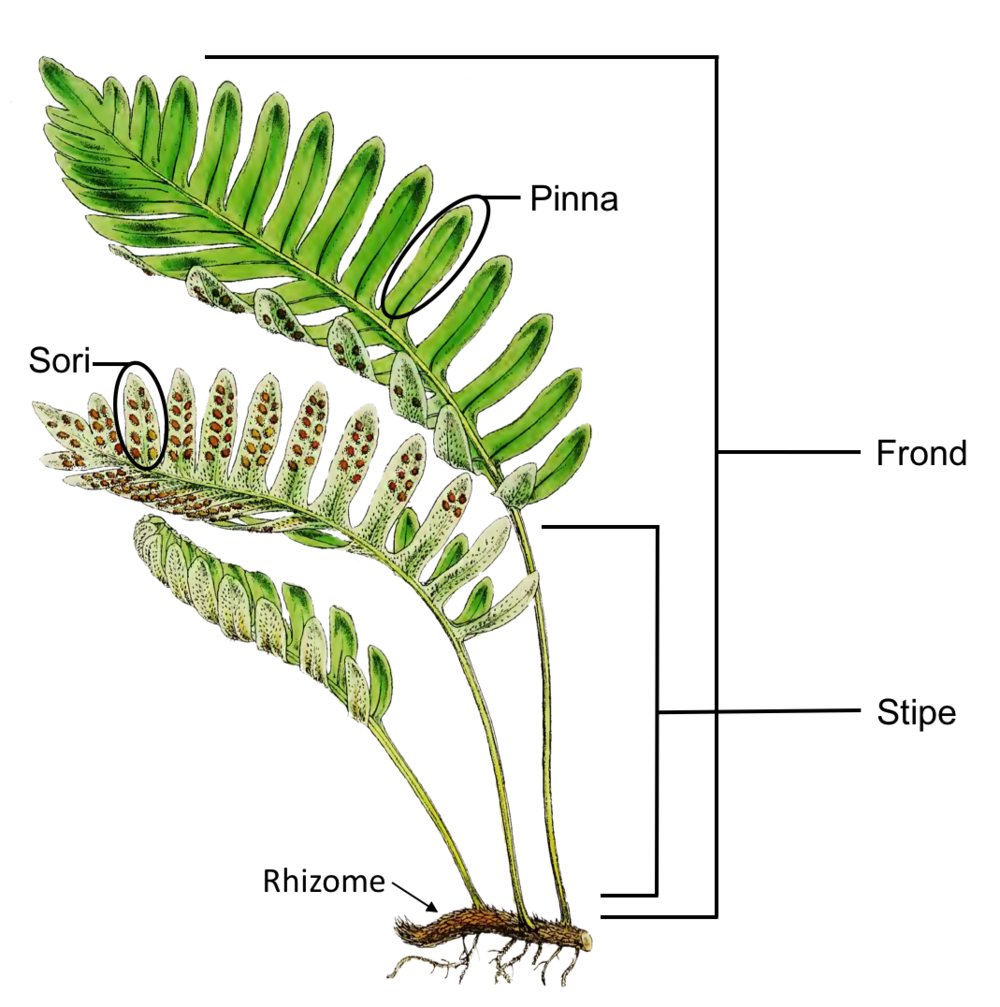
What are the reproductive characteristics of the order Polypodiales (polypod ferns)?
meiospores produced in spornagia, which are grouped in sori; meiospores germinate forming a prothallus; prothallus with rhizoids, antheridia, and archegonia; spermatozoids released from antheridia and swim to archegonia to fertilize egg cell
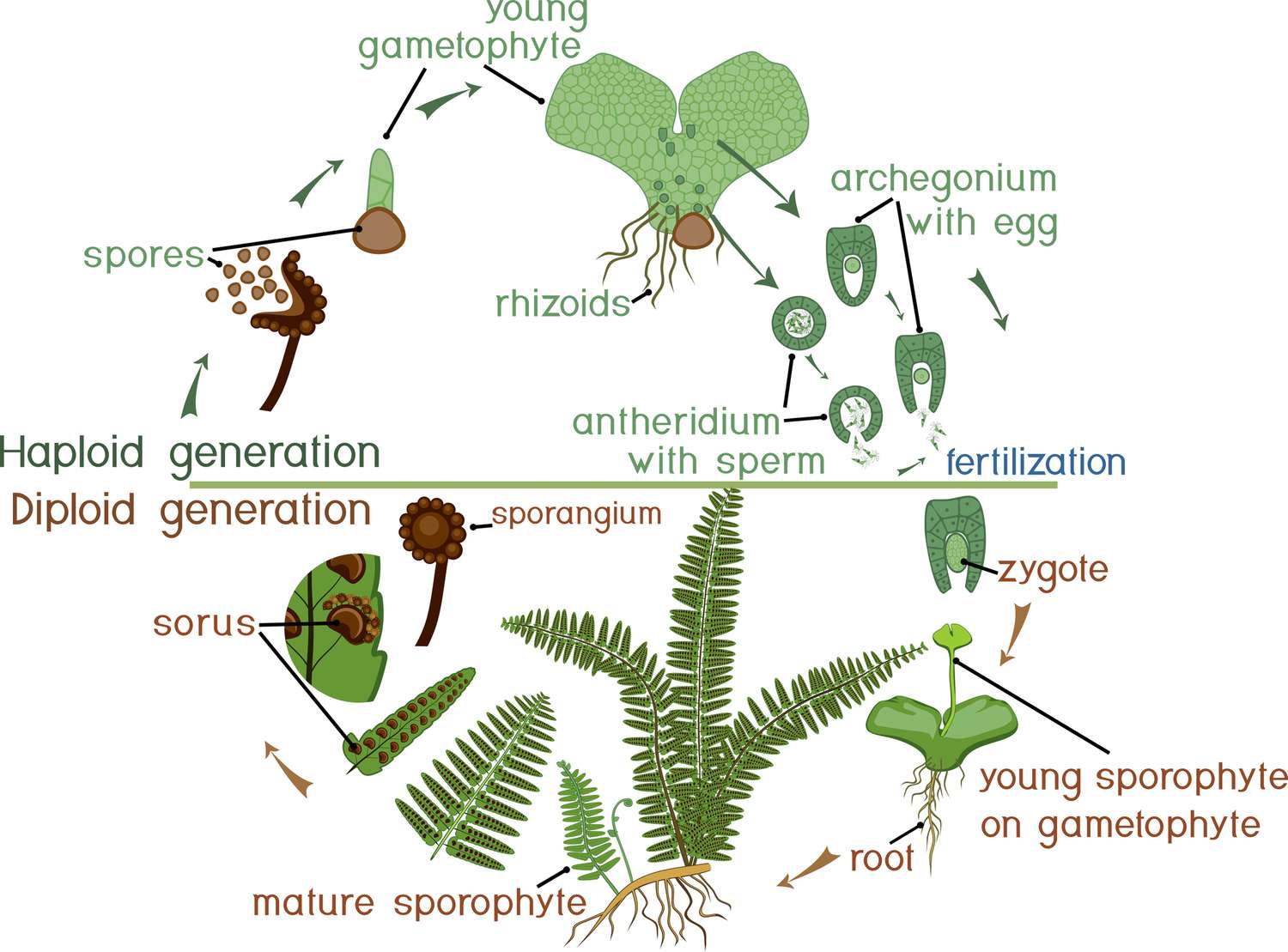
What is the significance of plastids with chlorophyll a and c?
they are carotenoids with four membranes
What is the ecological significance of Phaeophyta (brown algae)?
large brown algae form kelp forests
What are the characteristics of the division Bacillariophyta (diatoms)?
the most individual-rich and species-rich group of algae; generate 20-50% of the oxygen produced on the planet; found in freshwater and saltwater, most important group of marine plankton; unicellular with two valves formed by amorphic silica
What are the morphological parts of a spermatophyta?
roots and shoot (leaf and stem (hypocotyl, axillary bud, internode, node))
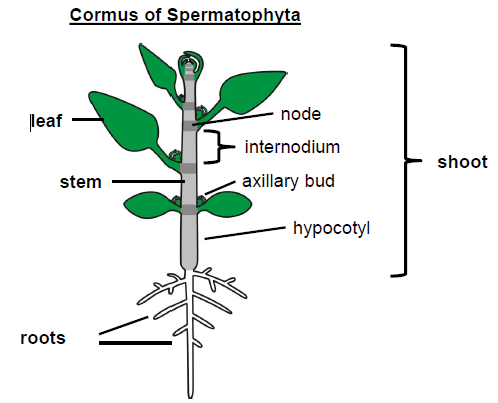
What are the morphological parts of a simple leaf?
stipules on base, petiole, blade with vein
What is the anatomy of a cross section of a leaf?
cuticle, adaxial epidermis, mesophyll (palisade and spongy layers), abaxial epidermis, stoma
